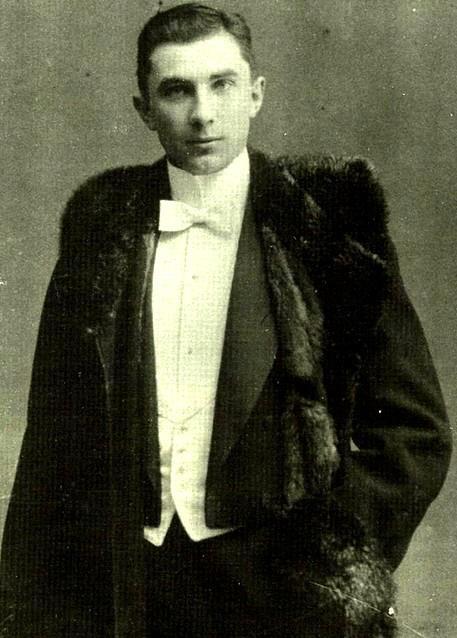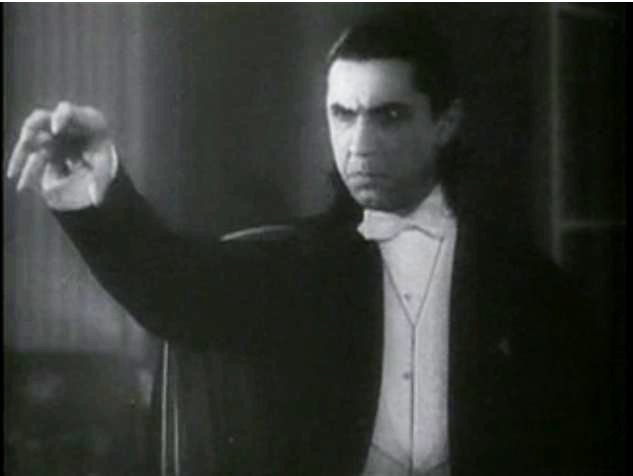|
The Wedding Song (1917 Film)
''The Wedding Song'' ( hu, A Nászdal) is a 1918 Hungarian film directed by Alfréd Deésy. The film was released on 27 February 1918, first shown at the Corso Theater in Budapest. Lugosi's co-star in the film, Karoly Lajthay, later went on to direct the first film version of "Dracula", entitled ''Drakula halála'' (1923). (Lugosi had already emigrated to America by then.) Plot Bela Lugosi played Paul Bertram, a celebrated violinist. While on their honeymoon, Bertram and his wife are assaulted by Izau (Károly Lajthay), a rival pianist who is in love with Bertram’s wife. Bertram kills the pianist in a duel and escapes into the forest. His wife remains behind, still believing that Bertram was killed by Izau. They are later reunited when she hears her husband playing a tune that he played to her on their wedding night. Cast * Béla Lugosi as Paul Bertram, a famous violinist (credited as Arisztid Olt) * Károly Lajthay as Izau (credited as Charles Lederle) * Klara Peterdy as Sylvi ... [...More Info...] [...Related Items...] OR: [Wikipedia] [Google] [Baidu] |
Alfréd Deésy
Alfréd Deésy (22 September 1877 – 18 July 1961) was a Hungarian film director, screenwriter and actor. He directed 77 films between 1915 and 1947. Deésy also appeared as an actor in 28 films between 1913 and 1960. Biography Deésy was born Alfréd Kämpf in Dés, Austria-Hungary (now Dej, Romania); his stage name means "from Dés," much as "Lugosi" means "from Lugos." At the turn of the twentieth century, Deésy was making his name as a prominent actor on the Hungarian stage. Deésy became interested in the potential of motion pictures early, and in 1911 became co-manager of the Apollo movie theater in Debrecen. The following year, Deésy began submitting scenarios to fledgling Hungarian film concerns, and in 1913 he made his debut as screen actor. His directorial career began with ''Csak semmi botrányt!'' (1915), produced by Star-film, a Hungarian film company over which Deésy ultimately took control and operated until 1919, when the Hungarian film industry was nat ... [...More Info...] [...Related Items...] OR: [Wikipedia] [Google] [Baidu] |
Béla Lugosi
Béla Ferenc Dezső Blaskó (; October 20, 1882 – August 16, 1956), known professionally as Bela Lugosi (; ), was a Hungarian and American actor best remembered for portraying Count Dracula in the 1931 horror classic Dracula (1931 English-language film), ''Dracula'', Ygor in ''Son of Frankenstein'' (1939) and his roles in many other horror films from 1931 through 1956. Lugosi began acting on the Hungarian stage in 1902. After playing in 172 different productions in his native Hungary, Lugosi moved on to appearing in Hungarian silent films in 1917. He had to suddenly emigrate to Germany after Hungarian Soviet Republic, the failed Hungarian Communist Revolution of 1919 because of his former socialist activities (organizing a stage actors' union), leaving his first wife in the process. He acted in several films in Weimar Germany, before arriving in New Orleans as a seaman on a merchant ship, then making his way north to New York City and Ellis Island. In 1927, he starred as Coun ... [...More Info...] [...Related Items...] OR: [Wikipedia] [Google] [Baidu] |
Károly Lajthay
Károly Lajthay (7 December 1883 – 30 August 1946) was a Hungarian film director, actor and screenwriter. He directed 17 films between 1918 and 1944. He also appeared in 13 films between 1916 and 1920. He was born in Marosvásárhely, Austria-Hungary (now Târgu Mureş, Romania). He directed the first film version of Dracula entitled ''Drakula halála'' (1921). Lajthay died in Budapest, Hungary. Selected filmography * '' A Karthausi'' (1916) — As actor * '' A Senki fia'' (1917) — As actor * ''Harrison and Barrison'' (1917) — As actor * '' St. Peter's Umbrella'' (1917) — As actor * '' Nászdal'' (1917) — As actor * ''Drakula halála'' (1921) — As director, lost film A lost film is a feature or short film that no longer exists in any studio archive, private collection, public archive or the U.S. Library of Congress. Conditions During most of the 20th century, U.S. copyright law required at least one copy o ... References External links * 1883 births ... [...More Info...] [...Related Items...] OR: [Wikipedia] [Google] [Baidu] |
Silent Film
A silent film is a film with no synchronized recorded sound (or more generally, no audible dialogue). Though silent films convey narrative and emotion visually, various plot elements (such as a setting or era) or key lines of dialogue may, when necessary, be conveyed by the use of title cards. The term "silent film" is something of a misnomer, as these films were almost always accompanied by live sounds. During the silent era that existed from the mid-1890s to the late 1920s, a pianist, theater organist—or even, in large cities, a small orchestra—would often play music to accompany the films. Pianists and organists would play either from sheet music, or improvisation. Sometimes a person would even narrate the inter-title cards for the audience. Though at the time the technology to synchronize sound with the film did not exist, music was seen as an essential part of the viewing experience. "Silent film" is typically used as a historical term to describe an era of cinema pri ... [...More Info...] [...Related Items...] OR: [Wikipedia] [Google] [Baidu] |
Béla Lugosi Filmography
Bela Lugosi (1882–1956), best known for the original screen portrayal of Bram Stoker's Count Dracula, Dracula in 1931, was in many movies during the course of his 39-year film career. He appeared in films made in his native Hungary, Germany and New York before re-locating to Hollywood in 1928. Films are listed in order of release. (see Bela Lugosi for his biography.) 1910s This is a list of confirmed film roles Lugosi has performed in. Some films from other filmography sources have not been included here such as Star Film's ''Casanova (1918 film), Casanova'' (1918), ''Lulu (1918 film), Lulu'' (1918) and ''Lili (1917 film), Lili'' (1917), all of which had announced that Lugosi would appear in them, but Lugosi was apparently dropped from the cast before production began. 1920s 1930s 1940s 1950s Television/ Radio *''Intimate Interviews'' (1932) interviewed on radio by Dorothy West *''Hollywood on Parade No. A-8'' (1933) a 10-minute comedy skit/ short subject with Bonnie ... [...More Info...] [...Related Items...] OR: [Wikipedia] [Google] [Baidu] |
1918 Films
The year 1918 in film involved some significant events. __TOC__ Events *January 27 – Tarzan makes his film debut in ''Tarzan of the Apes''. *March 10 – Warner Bros. release their first produced picture, ''My Four Years in Germany''. *July – The animated ''The Sinking of the Lusitania'' is one of the first examples of animation being used for something other than comedy. *Following litigation for anti-trust activities, the Motion Picture Patents Company disbands. *Louis B. Mayer arrives in Los Angeles and forms Louis B. Mayer Pictures Corporation. *28 mm safety standard film, designed by Alexander Victor, becomes one of the earliest film formats to use "safety film" film base, bases in order to safeguard the amateur market against nitrate fires. Top-grossing films (U.S.) Notable films released in 1918 Argentina *''Buenos Aires tenebroso'', directed by Juan Glize *''En un día de gloria'', directed by Mario Gallo and Alberto Traversa *''La garra porteña'', direct ... [...More Info...] [...Related Items...] OR: [Wikipedia] [Google] [Baidu] |
Hungarian Black-and-white Films
Hungarian may refer to: * Hungary, a country in Central Europe * Kingdom of Hungary, state of Hungary, existing between 1000 and 1946 * Hungarians, ethnic groups in Hungary * Hungarian algorithm, a polynomial time algorithm for solving the assignment problem * Hungarian language, a Finno-Ugric language spoken in Hungary and all neighbouring countries * Hungarian notation, a naming convention in computer programming * Hungarian cuisine Hungarian or Magyar cuisine is the cuisine characteristic of the nation of Hungary and its primary ethnic group, the Magyars. Traditional Hungarian dishes are primarily based on meats, seasonal vegetables, fruits, bread, and dairy products. ..., the cuisine of Hungary and the Hungarians See also * * {{disambiguation Language and nationality disambiguation pages ... [...More Info...] [...Related Items...] OR: [Wikipedia] [Google] [Baidu] |
Hungarian Silent Feature Films
Hungarian may refer to: * Hungary, a country in Central Europe * Kingdom of Hungary, state of Hungary, existing between 1000 and 1946 * Hungarians, ethnic groups in Hungary * Hungarian algorithm, a polynomial time algorithm for solving the assignment problem * Hungarian language, a Finno-Ugric language spoken in Hungary and all neighbouring countries * Hungarian notation, a naming convention in computer programming * Hungarian cuisine Hungarian or Magyar cuisine is the cuisine characteristic of the nation of Hungary and its primary ethnic group, the Magyars. Traditional Hungarian dishes are primarily based on meats, seasonal vegetables, fruits, bread, and dairy products. ..., the cuisine of Hungary and the Hungarians See also * * {{disambiguation Language and nationality disambiguation pages ... [...More Info...] [...Related Items...] OR: [Wikipedia] [Google] [Baidu] |
Films Directed By Alfréd Deésy
A film also called a movie, motion picture, moving picture, picture, photoplay or (slang) flick is a work of visual art that simulates experiences and otherwise communicates ideas, stories, perceptions, feelings, beauty, or atmosphere through the use of moving images. These images are generally accompanied by sound and, more rarely, other sensory stimulations. The word "cinema", short for cinematography, is often used to refer to filmmaking and the film industry, and to the art form that is the result of it. Recording and transmission of film The moving images of a film are created by photographing actual scenes with a motion-picture camera, by photographing drawings or miniature models using traditional animation techniques, by means of CGI and computer animation, or by a combination of some or all of these techniques, and other visual effects. Before the introduction of digital production, series of still images were recorded on a strip of chemically sensitiz ... [...More Info...] [...Related Items...] OR: [Wikipedia] [Google] [Baidu] |




